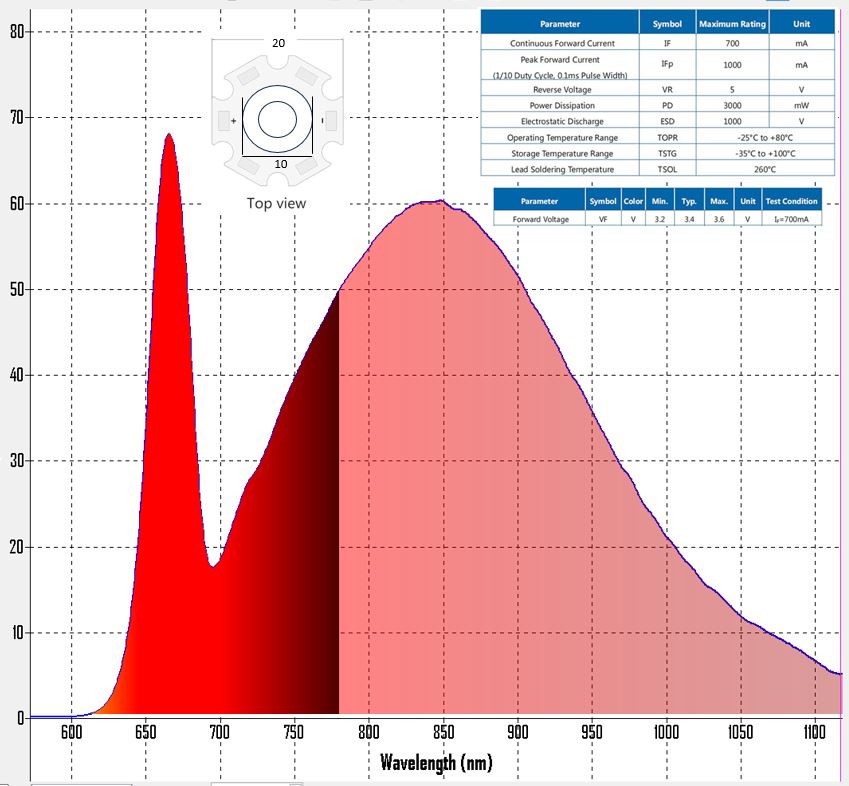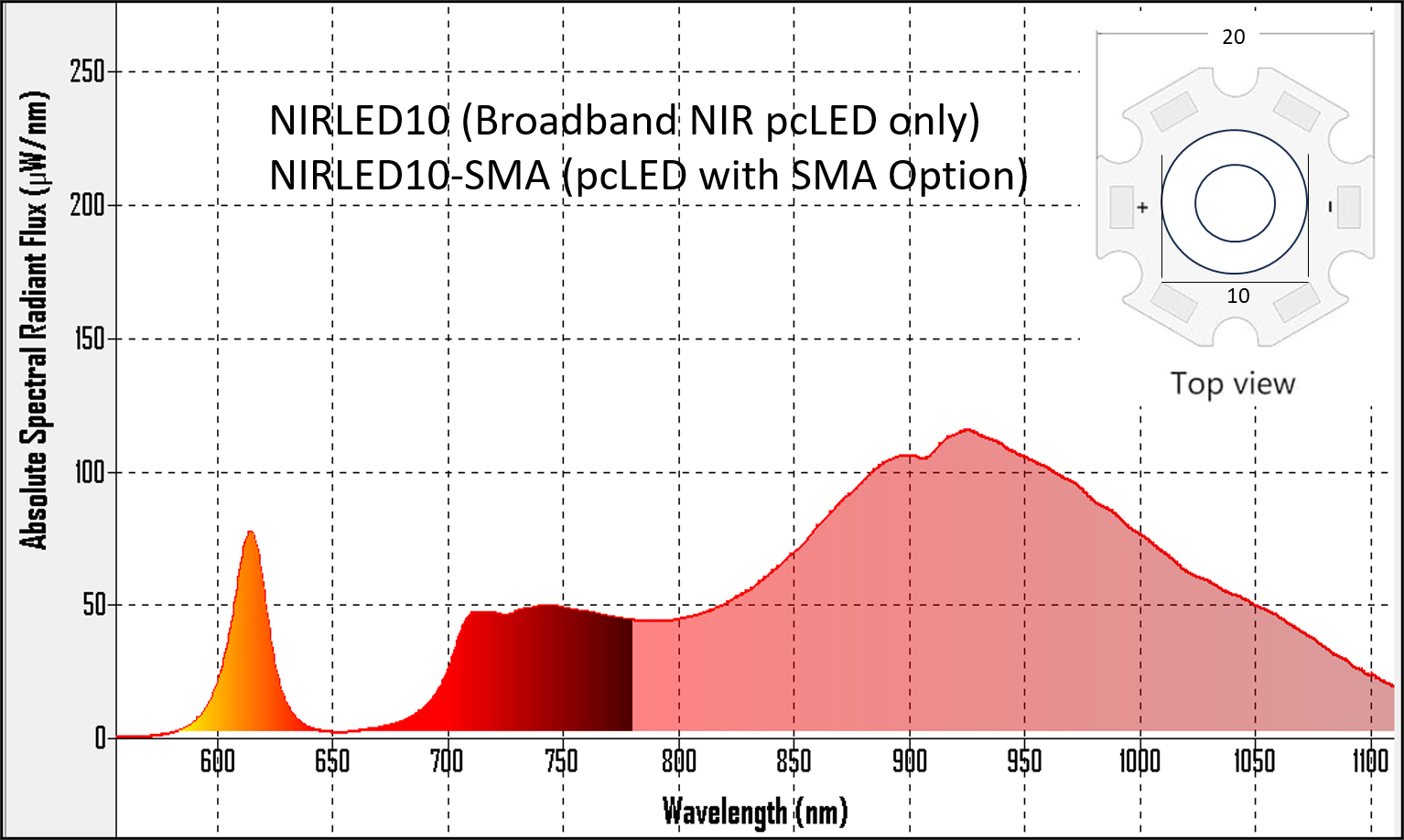For near infrared LED bulbs in general lighting, please click here.
Near Infrared LED for Broadband High Power Applications
Our unique broadband near infrared LED is among the highest power NIR-SWIR optical emitter on the market. These are phosphor-converted near infrared LEDs (pcLEDs) available on a printed circuit board (PCB) that can be integrated into any instrument or device. They emit across a wide NIR-SWIR spectral range from 600 to >1200nm. Emitting area is also customizable but standard is around 5mm, which makes them easy to couple into lenses and fiber optic cables for IR communication or spectroscopy applications.

A customizable broadband near infrared COB LED with 5mm emitting area for high power security, imaging, sensing, and spectroscopy applications

Our improved NIRLED10 delivers 3X higher power at longer NIR wavelengths
Commercial near infrared LEDs have limited power output and/or narrow spectral coverage or bandwidth. Our proprietary phosphor-based approach is used instead to fabricate broadband LED(s) not just for the near-infrared, but also the short-wave infrared (SWIR) spectral region.
By generating high NIR/SWIR power within a small emitting area, it is possible to use standard optics to project infrared light and images over long distances. For example, our unique IR pcLED devices make it possible to extend the range, sensitivity, and performance of low-cost multi-spectral cameras without the need for expensive and bulky SWIR sensors and equipment. They also make it possible to customize the object or area lighting to the sensitivity of the camera sensors. With a custom NIR/SWIR pcLED, an MSI or HSI camera can produce multiple single- or narrow-band images over any infrared range between the 600nm-1800nm spectral range.
In addition to multi-spectral or hyper-spectral imaging, IR LEDs have a multitude of applications in automotive, industrial, security, medical, robotics, smartphones, printers, gaming, toys, virtual reality headsets, immersive reality glasses and goggles, etc. They also have applications in LIDAR, which is widely used in self-driving autonomous vehicles. LIDAR is short for “light detection and ranging”; it works by bouncing invisible (infrared) light pulses off objects in order to measure distance and depth from how long it takes the light to return to the sensor. The development of a compact and low-cost LIDAR system has been the aim of research for a long time. Laser technology is generally used in LIDAR applications but those tend to be more expensive with limited spectral range compared to phosphor-converted infrared LED systems.